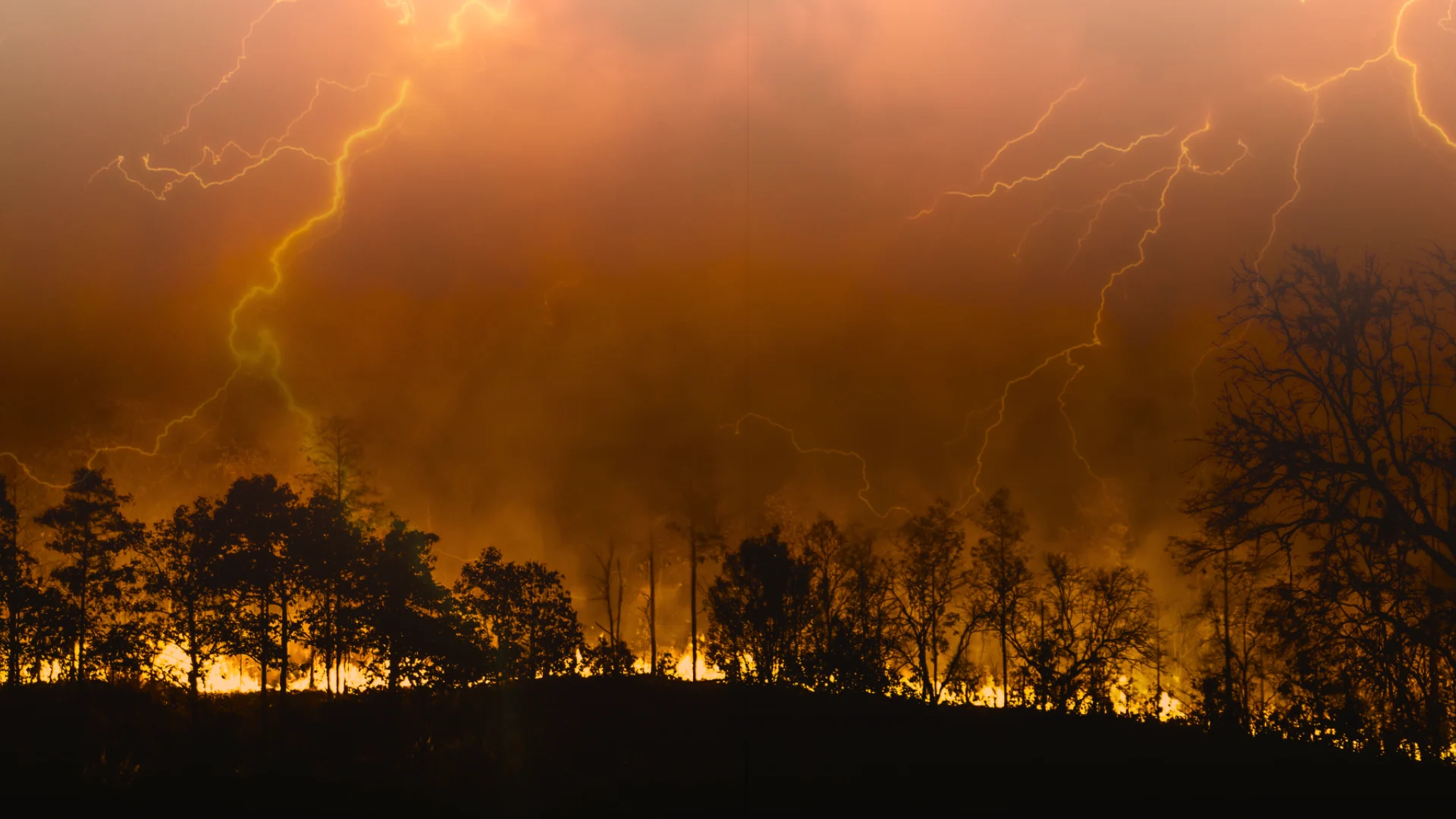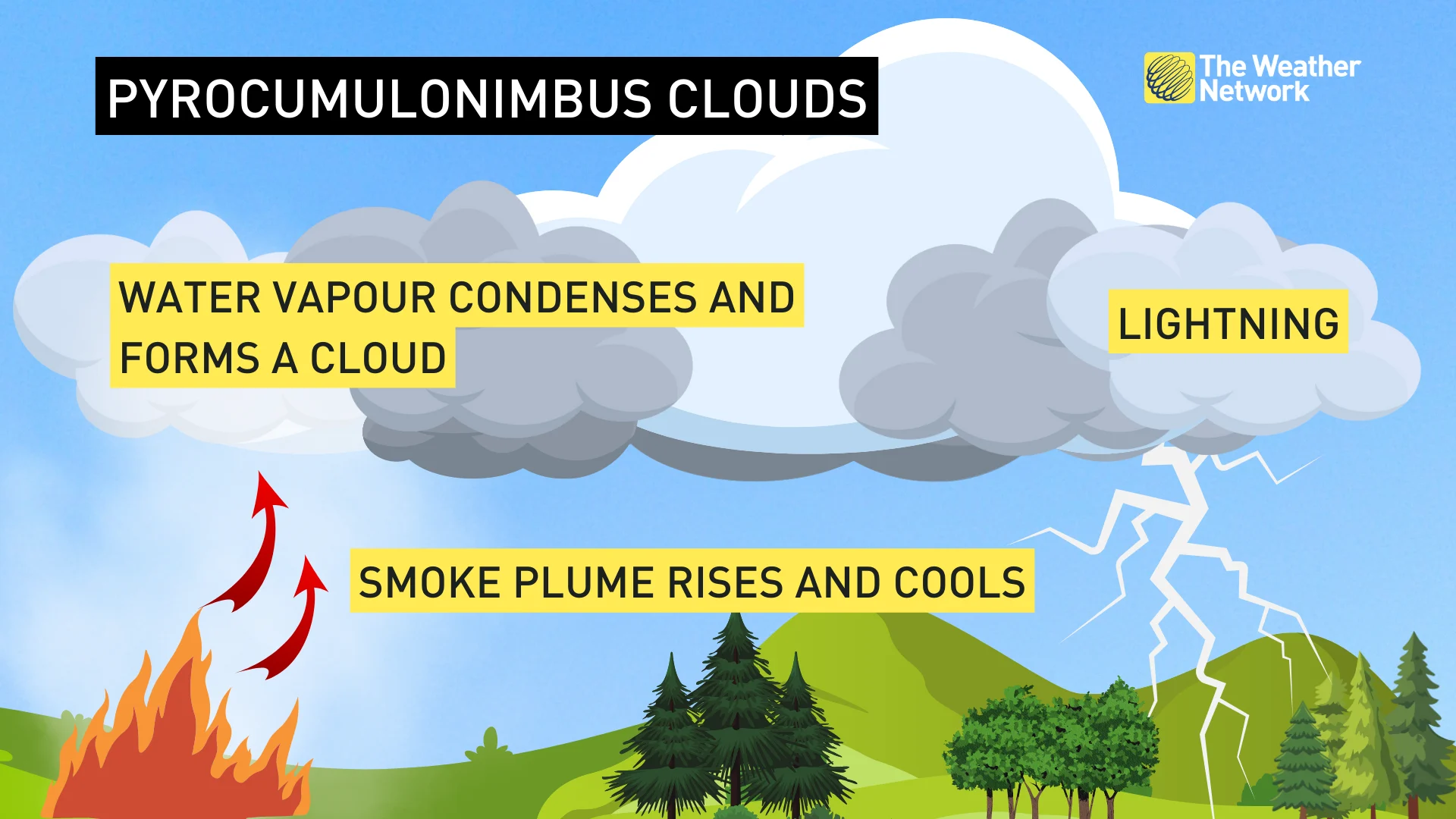
This Alberta wildfire was so strong, it generated its own lightning
The most powerful of wildfires are able to generate their own weather—lightning and all!
Lighting strikes are responsible for igniting about 45 per cent of the wildfires that burn in Canada each year. So, while everyone knows that lightning generates wildfires, did you know that wildfires can generate lightning?
It’s true—when a wildfire reaches tremendous strength, it can generate its own weather!
We saw this happen in 2023 when an out-of-control wildfire in British Columbia spawned a super rare ‘firenado’.
More recently, a wildfire that tragically devastated the town of Jasper, Alta., and its national park sparked up its very own thunderstorm, topped off with its own lightning on July 24.
A past example of a wildfire producing its own lightning was the infamous Fort McMurray wildfire that burned in May of 2016.
So, how is it that a wildfire can generate its own weather, and especially something as powerful as its own lightning?
It’s all in the heat of the moment
Heat is energy. That’s why we tend to see thunderstorms develop after a day (or days) of hot weather. Of course, there’s more that goes into thunderstorm development, but we’ll get to that shortly.
The stronger a fire is and the more fuel it consumes, the more heat it is going to release, and that heat is going to be released into the atmosphere. This means there is an increase in energy in the atmosphere surrounding the wildfire.
In addition to energy, storms also need instability in the atmosphere in order to develop. This allows parcels of air to move vertically in the atmosphere.

While finally being released from the grip of an intense and prolonged heat wave, an upper trough was able to move over Alberta, leading to the instability needed for thunderstorms to develop in the superheated atmosphere. Some of the storms that developed on July 24 were even powerful enough to prompt tornado warnings.
Jasper was south of the risk area forecasters were looking at for thunderstorms, but the ingredients were already in play for storm development due to the intense heat from the fire and atmospheric instability.
Enter: The pyrocumulonimbus cloud
Storms generated by the most intense wildfires are called ‘pyrocumulonimbus’ clouds—taking the word ‘pyro’ from the Greek word for fire and cumulonimbus, the meteorological name for a storm cloud.
These clouds always start off as ‘pyrocumulus’ clouds, formed when a cumulus cloud develops over the top of a wildfire’s smoke column. Only a small fraction of pyrocumulus clouds transition into pyrocumulonimbus clouds, and researchers are still trying to figure out the exact mechanisms for this transition.
SEE ALSO: Why we see floods following fires: A tale of two extremes
However, pyrocumulonimbus clouds lack one component that regular cumulonimbus clouds do: precipitation. This is because the smoke from the fire, combined with strong updrafts, injects itself into the cloud above.

Pyrocumulonimbus clouds also tend to have extreme updrafts, effectively creating a positive feedback loop that promotes fire growth as air at the surface is forced to rapidly rise into the base of the cloud.
The particulates in the wildfire’s smoke can also become electrically charged, especially in fires burning at extremely high temperatures, resulting in lightning formation, like what we saw happen in the Jasper wildfire. Essentially, it takes the strongest burning wildfires to produce their own stormy weather and even stronger fires to produce lighting.
Pyrocumulonimbus clouds have been likened by researchers over the years to volcanic eruptions, in that they are sources of sudden and explosive power. Since volcanic eruptions have also been documented to be so powerful that they produce their own lighting through the same mechanisms, it’s no wonder then that the most extreme wildfires can do the same.

Donate online at redcross.ca
Thumbnail image is for creative/illustrative purposes only and was made using Canva.











